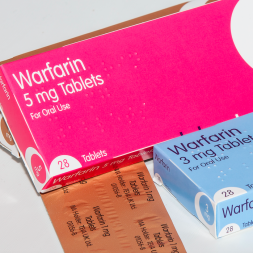5 Warfarin Management Resources for FNPs
After the potential side effects and complications of warfarin were hammered into me in my nurse practitioner program, I was pretty terrified to prescribe the medication. Not to mention, I felt like my NP program spent so much time discussing the complications of warfarin, they forgot to hone in on how to actually manage the medication effectively. Where do you go when you aren’t sure what the next steps are to manage an out-of-whack INR correctly?
Fortunately, there are several resources out there that make helpful in-the-moment guides for primary care NPs. Whether your patient’s INR is high or low, or you’re initiating warfarin therapy, these resources will help you determine next steps in anticoagulant management.
1. Ambulatory Clinical Practice Guidelines
from University of Wisconsin Health
I love a good clinical algorithm and this resource from the University of Wisconsin is chock full of them. From a table outlining the dosage and management of initial warfarin therapy to increasing and decreasing dosages with maintenance dosing, the tables in this downloadable pdf are quick and easy to read. As an added bonus, a list of medications that increase and decrease INR is included to help guide other prescribing decisions with anticoagulated patients. The guide is geared toward the outpatient setting so it’s directly applicable to the primary care nurse practitioner.
2. Management of Elevated INR and Reversal Algorithm
from The Ohio State University Wexner Medical Center
When you have that ‘oh crap’ moment because your patient’s INR is too high, let the Management of Elevated INR and Reversal Algorithm be your guide. While this resource isn’t specifically geared toward the outpatient setting, the algorithm for Elevated INR or Non-Life-Threatening Bleeding can still be used in primary care and gives step-by-step instructions for dosing changes and monitoring based on just how high INR might be. The document can also help give anticipatory guidance as to what next steps in management will be if your patient requires emergent or inpatient care. The link below leads to a paid version of the content although it used to be available free online. If you’re a master detective (which I don’t appear to be) you may be able to locate it. The next resource on our list is also helpful if you don’t want to shell out the $$ for this one.
3. Practical Tips for Warfarin Dosing and Monitoring
from Cleveland Clinic Journal of Medicine
While this article was initially published in 2003, warfarin is an older medication and the basics of therapy have remained pretty consistent over the years. I found this article an easy read on the primary principles of warfarin initiation and management with easy to follow instructions and tips. This is a particularly good read for new grad nurse practitioners or anyone who feels like they need a refresher on the general approach to warfarin initiation and management. It also contains a solid algorithm for the management of patients with elevated INR values.
from Washington University in St. Louis
Not sure at what dose to start your patient’s anticoagulant? This online calculator will help. Whether you want to integrate the results of new genetic testing into your treatment plan or stick to the basics like ethnicity, height and weight, Warfarindosing.org takes the guesswork out of the initiation process.
5. Warfarin Patient Education Handout
from The Ohio State University Wexner Medical Center
Patient education is a major component of prescribing warfarin as the side effects/complications of the medication have serious implications. Compliance with management protocol is of utmost importance to keep your patient on the right track. While you give verbal instructions in the clinic, a written reminder is essential to help with compliance efforts once the patient heads outside of clinic doors. This information handout is lengthy but comprehensive and reminds patients of relevant information you’ve shared.
You Might Also Like: Are You Making I&D Incisions Correctly?

